This is the first of two articles on Chabad early-childhood education programs.
New York mom Jennifer Muhlrad recently noticed her younger daughter, 4-year-old Zoe, taking change out her wallet. When Jennifer asked her what she was doing, the little girl responded that she needed the money to give tzedakah, to charity, at her school, the Preschool of the Arts in Lower Manhattan.
“It’s adorable, it’s perfect and exactly what she should be doing at this age. I want my kids to know about the foundations of Judaism, and that’s why Preschool of the Arts is so important. It has a wonderful educational program,” says Muhlrad, whose older daughter, Dalya, 6, also went there.
The preschool is one of an estimated 400 early-childhood centers in North America under the auspices of Chabad-Lubavitch shluchim, or emissaries.
The schools are located in big cities like New York, Los Angeles and Chicago, in addition to smaller communities like Vancouver, Wash.; and Lone Tree, Colo. They cater to a wide range of Jewish families, many of whom do not belong to a synagogue and are not religiously affiliated.
According to Rabbi Nochem Kaplan, director of the education office of Merkos L’Inyonei Chinuch—the educational arm of Chabad-Lubavitch, headquartered in the Crown Heights neighborhood of Brooklyn, N.Y.—the number of established schools has risen dramatically in recent years, thanks to enterprising Chabad emissaries, individual donors and a recent grant program.

“In the last 20 years, preschool education has become increasingly important on the American secular educational scene for two basic reasons: one, with two parents working today, most children have to go to a preschool, whereas 50 years ago it was a luxury,” Kaplan explains, adding that research has shown that kids who attend preschool programs perform better in elementary school.
“If you do a quick [online] search, you will find studies that show that the early-childhood years—from an educational standpoint, and from a psychology and brain developmental one—are a very formative time,” says Esty Marcus, director of the Chai Jewish Preschool in Foster City, Calif. “It is a window in time when a child’s emotional and social development is happening.
“If you wait until they’re 5 or 6 to teach them kindness, or how to behave, or how to work with each other or be resilient if someone hurts your feelings, it is much harder,” she adds.
Planting Seeds for the Future
Chabad educators say their push for substantive early education comes directly from the Torah and from the words of the Rebbe—Rabbi Menachem M. Schneerson, of righteous memory.
“The Torah says that children are like a seed,” Marcus explains. “Anything you do will have an impact on them. We want to give them a foundation from when they are very young and surround them with the alef-bet and kedusha [holiness].”
According to a 2008 publication from the Center on the Developing Child at Harvard University, “The emotional and physical health, social skills and cognitive-linguistic capacities that emerge in the early years are all-important prerequisites for success in school, and later, in the workplace and community.”
If that is true from a general developmental and educational perspective, Chabad educators stress that it’s even more crucial from a Jewish viewpoint to ensure that children have a basic understanding of their heritage. This is especially pertinent in light of a recently released Pew Research Center study that found 30 percent of Jews had no denominational affiliation, and 20 percent said being Jewish is either “not too/not at all” important in their lives.
Preschool can have “life-altering effects,” insists Sarah Rotenstreich, director of Preschool of the Arts. “You can’t make up for the early-childhood years. Judaism has always told us this, but now science is catching up. From a Jewish perspective, [the question is] what memories will they have, what spark can we give?”
“People want an environment that’s warm, loving and educational, and that’s what we try and do,” says Rabbi Mordechai Shain, executive director of Lubavitch of the Palisades in northern New Jersey, which opened its preschool almost 20 years ago and expanded into elementary-school education four years ago. “A lot of it is the teachers—you have to have the right teachers, who are warm, loving and smart, and who can figure out how to transmit the education to the children.”
The early-childhood programs also give young Jewish families the chance to engage Jewishly at a time in their lives when they might not be thinking about continuity and the future. Kaplan notes that many parents don’t join a synagogue until their children are old enough for Hebrew school, and so poses: “What’s giving young families the opportunity to connect to Judaism? Precious little, and that’s where shluchim come in. If there’s a need, the shluchim are there to meet the need.”
Early-childhood programs, he continues, embody a “vehicle and opportunity to help young families begin to orient themselves to living Jewish lives.”
Integrated Into Everything
However, simply talking about the alef-bet and singing traditional songs aren’t enough to appeal to parents who want the best academic program to prepare their child for elementary school, but may not necessarily be looking for a “Jewish” education.
To offer the best, say educators, Judaism must permeate every aspect of the day and be integrated into everything a child does. Thus, a nature walk might lead to a discussion on the beauty of G‑d’s world; a counting game may incorporate the use of plastic dreidels; and setting a table for a pretend dinner may include a loaf of challah, a Kiddush cup and Shabbat candlesticks.
Judaism cannot be treated as a “circle time” event, says Devora Krasnianski, national coordinator of the Chabad Early Childhood Education Network, a project of the Shluchim Office, the global Chabad-Lubavitch resource center. CECE comprises a coalition of about 100 Chabad preschool directors throughout the United States who offer each other advice on a wide range of issues—from handling student challenges to innovative classroom arrangements.
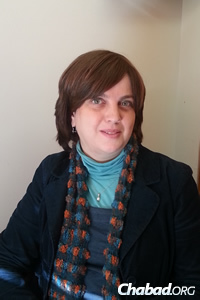
To encourage Chabad-run preschools to offer the best possible programs, Chabad’s national education office has released a booklet, “The How and Why of a Merkos Early Childhood Center.” Among the topics addressed are creating a school’s philosophy; curriculum development; and issues related to children’s health, safety and nutrition. All of the guidelines are designed to help schools reach the preschool standards set forth by the National Council for Private School Accreditation.
That council is comprised of smaller accreditation agencies, including Merkos L’Inyonei Chinuch, which institutes rules designed specifically to address the needs of Orthodox nursery-to-grade-12 schools. Thus far, according to Kaplan, about 40 Chabad programs have received national accreditation.
“As the need for early-childhood education grows, the need for quality education will become much greater,” adds Kaplan. “If parents send their child to preschool, they want to know it’s the best. So, increasingly, the need for accreditation is being felt all over the place.”
Some preschools are also proving their mettle by acing state standards and qualifications, such as the Jewish Early Childhood Center in Boynton Beach, Fla., which has gotten perfect scores from the state’s Voluntary Prekindergarten (VPK) Program’s Provider Kindergarten Readiness Rate four years running and five-star ratings from Quality Counts, a school assessment, for the last three years.
While similarities may exist from program to program, the schools are as unique as the populations they serve, says Krasnianski, adding that there is no one central preschool philosophy.
“Teachers are very sensitive to their clientele; that’s why there’s no general curriculum from Brooklyn [the headquarters of Chabad]. It has to be localized for the specific community and classes,” she says. “Every preschool aims to work with their community. In some communities, Montessori is an exciting way of educating, so Chabad will open a Montessori-style school,” where students learn at their own pace. “In other areas, they may go for a more traditional preschool or a Reggio Emilia program,” a style of teaching founded in post-World War II Italy that focuses on the community’s involvement in a child’s education.
Tuition rates vary from community to community, ranging from a few thousand dollars a year for a smaller, suburban preschool to upwards of $20,000 for a big-city, full-day early-childhood program. Many educators say they try to keep their tuitions on par with other schools in their area and will work with families who want to send their children, but find it financially difficult to do so.
That point was reinforced by Chabad’s educational office in Brooklyn: If parents seek a Chabad preschool, everyone will work together to try and make that happen.
Preferring the Philosophy
Rachelle Hornung, who is Orthodox, was so happy with the Chabad-run preschool she sent her older daughter to in Boston that when the family relocated to Long Island, N.Y., she sought out another Chabad preschool. “I recognized that the philosophy differed religiously, as my family and I are not Lubavitch, but I found in the Boston program and in the Five Towns Chabad preschool that . . . they push v’ahvata leracha kamocha [‘Love your fellow [Jew] as yourself’], and I have no problem with my children growing up with that strong sentiment.”
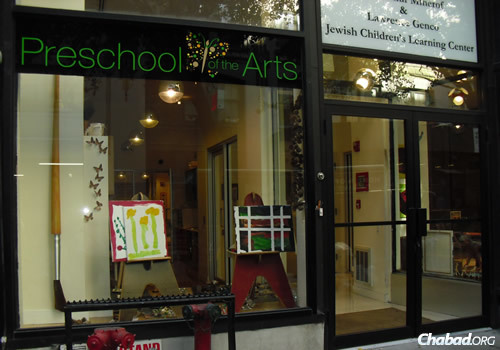
While some choose a Chabad-run preschool for its Jewish substance, others select one because it is simply the best educational facility in their region.
“We are known as one of the top five preschools in town,” says Sarah Cunin, director of the Aleph Academy in Reno, Nev. “We’re part of so many initiatives … and we do a lot of progressive initiatives at our school. Parents just really like the philosophy.”
Now in its fifth year of operation—previously, Cunin had a home-based preschool—Aleph Academy incorporates the Reggio approach, which offers a curriculum dictated by the interests and discussions of the children themselves.
“We thought it was the closest to the Jewish philosophy of ‘Teach your child, according to his way.’ So it really is seeing what our children’s interests are and what can be learned based on that interest,” she explains. “We are big believers in place-based education; that you can learn a lot from where you live. The families here are very outdoorsy, and we have a natural playscape.”
Cunin notes that many of the 40 children between the ages of 18 months and 5 years old who attend the preschool are not observant and/or come from homes where only one parent is Jewish. What draws them in, she says, is the school’s reputation, and the fact that it is entirely “green,” running on solar power.
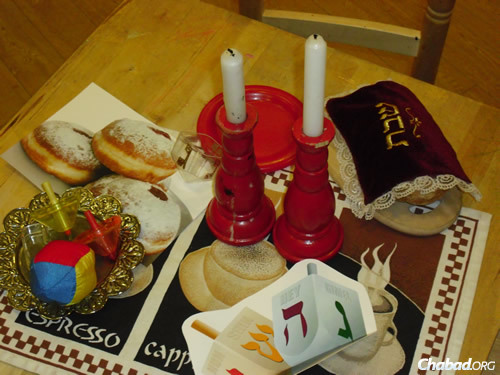
“The parents who come through our doors are knowledgeable consumers, well aware of developmentally appropriate practices,” says Malkie Herson, who started the Zimmer Preschool at the Chabad Jewish Center in Basking Ridge, N.J., more than a decade ago with just three students, one of them her own son. “Ours is a school that hones the child’s development across the spectrum—emotional, motor, cognitive and spiritual.” The last one, Herson notes, may not necessarily be the goal of the parents who pick her school, but it certainly is one of her key concerns.
“Hashem [G‑d] created us as a total being,” she explains, “with our body, mind and emotions all working in sync. It’s our job as educators to look at the child as a holistic being, and hone their skills and development across the spectrum. Thus, working on motor development is as ‘Jewish’ as all other aspects of education.”

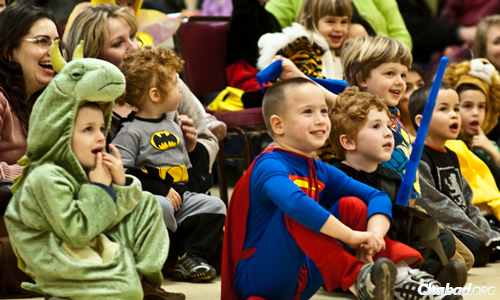

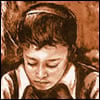




Start a Discussion